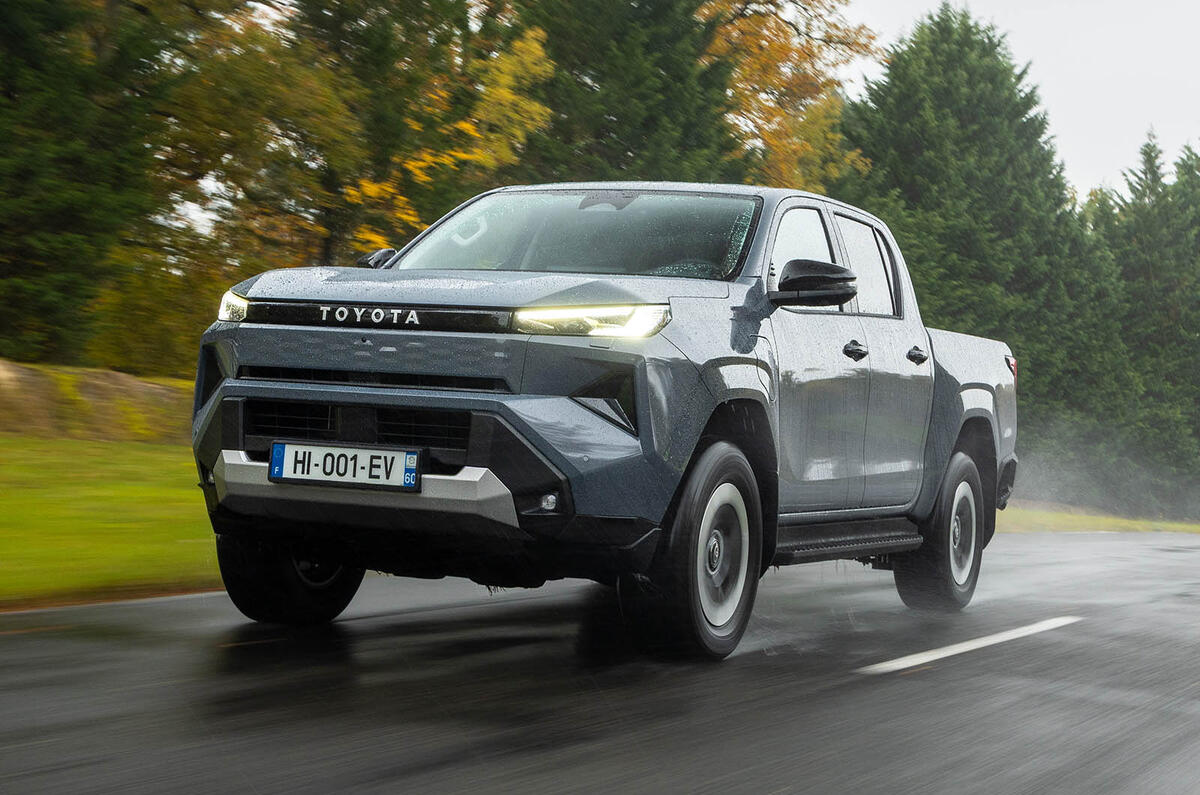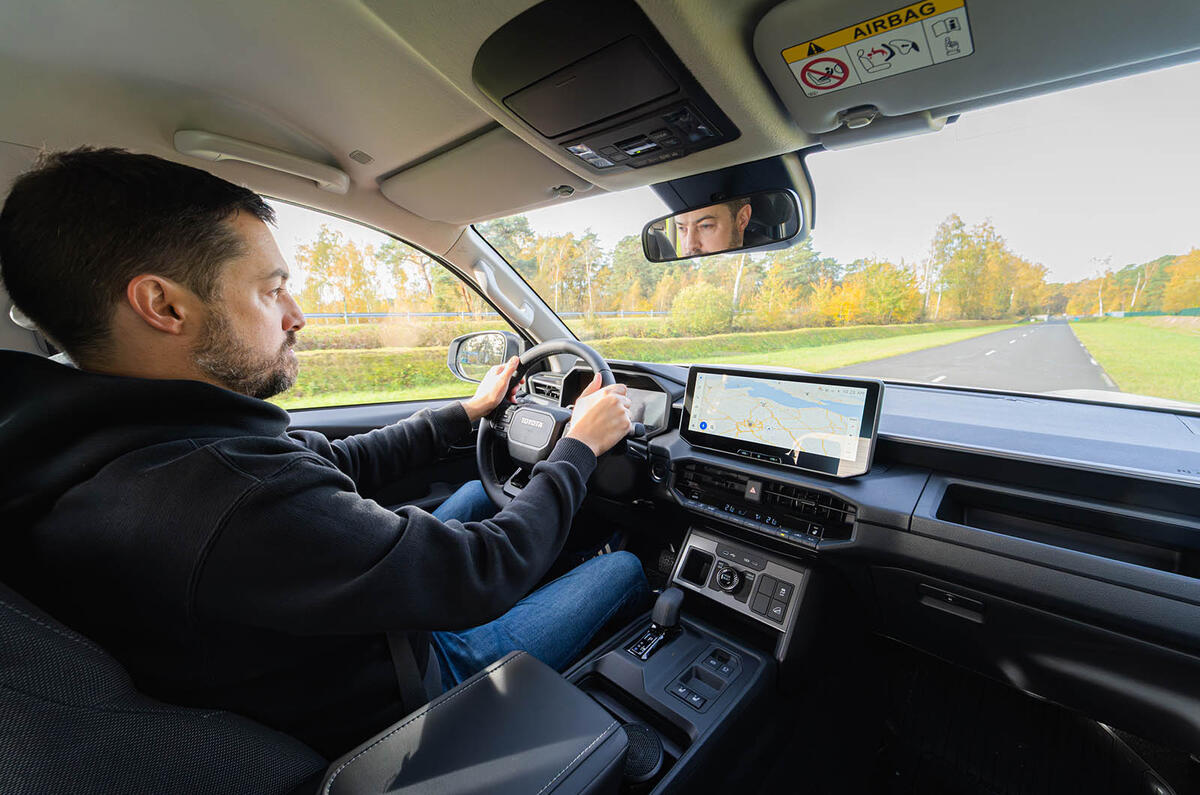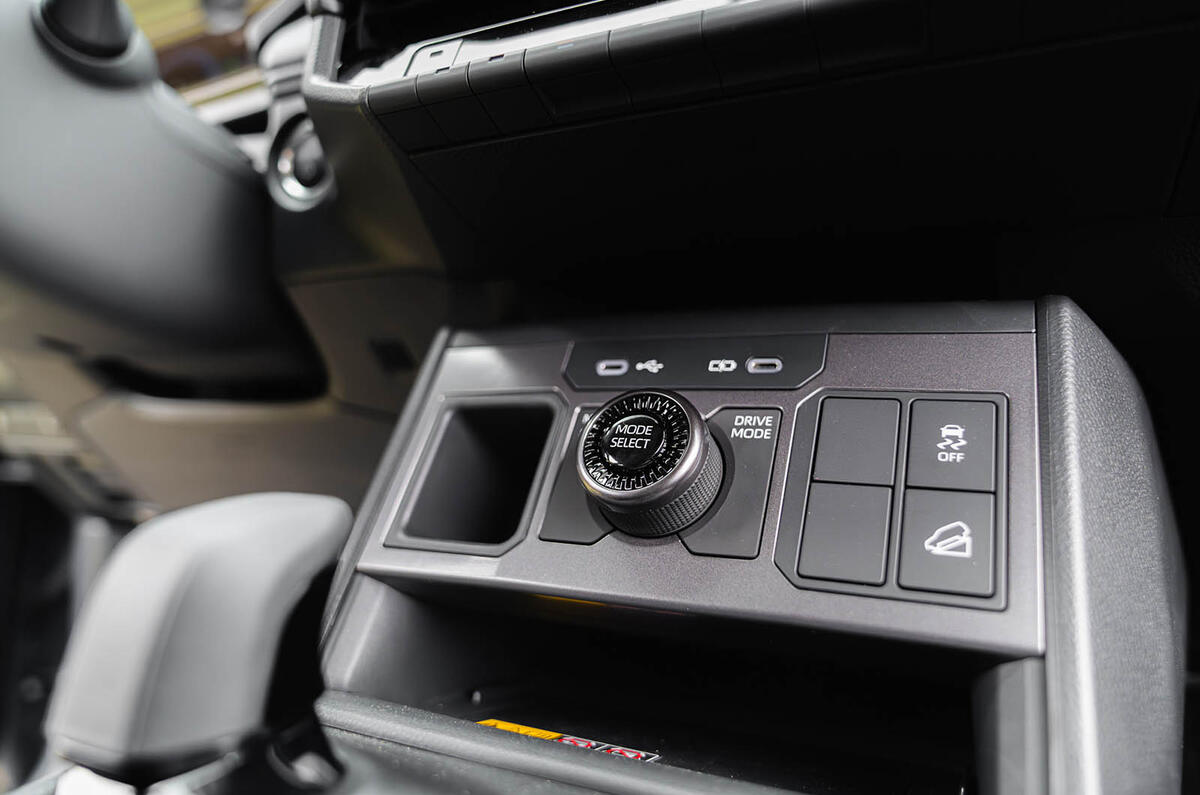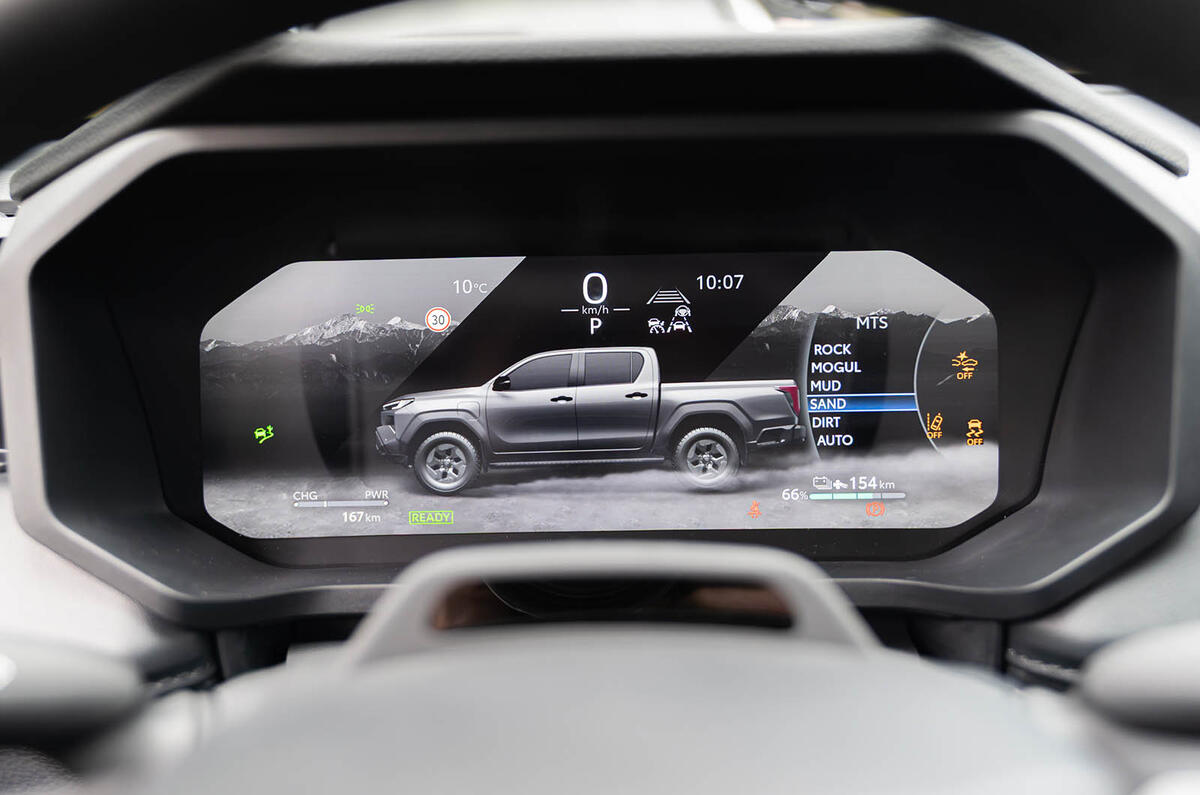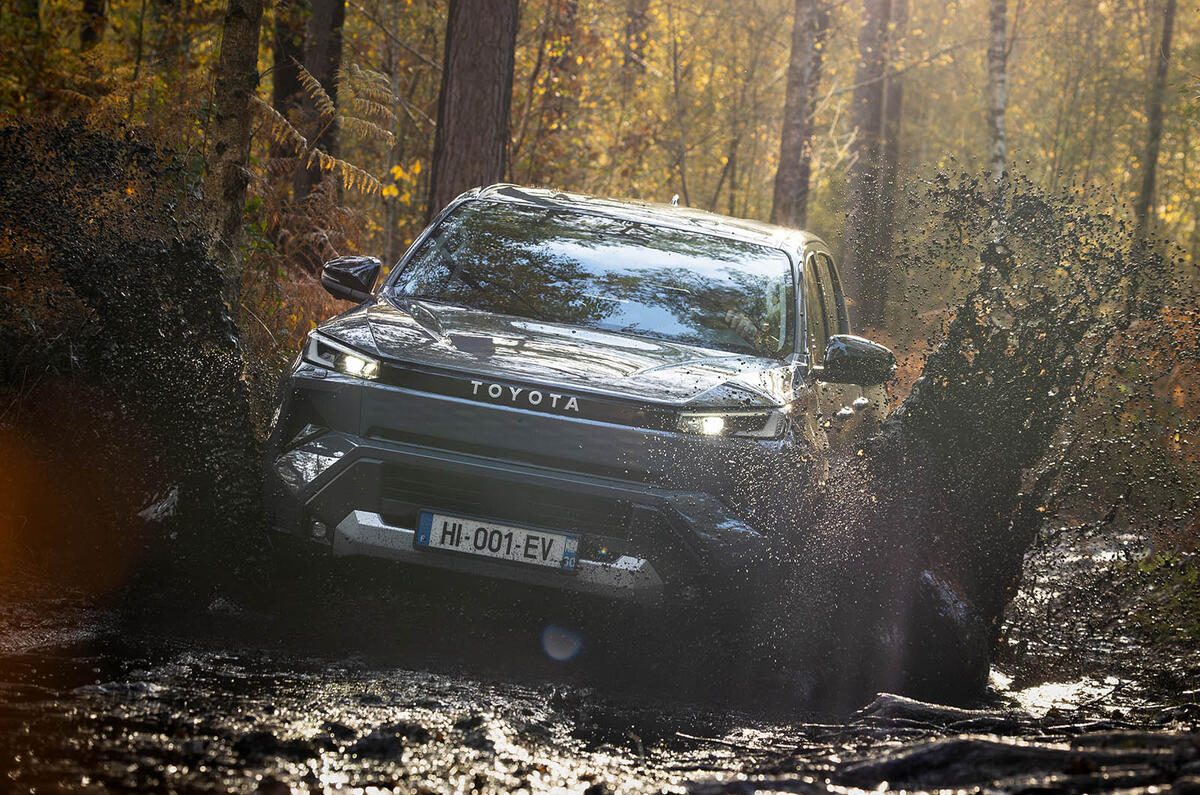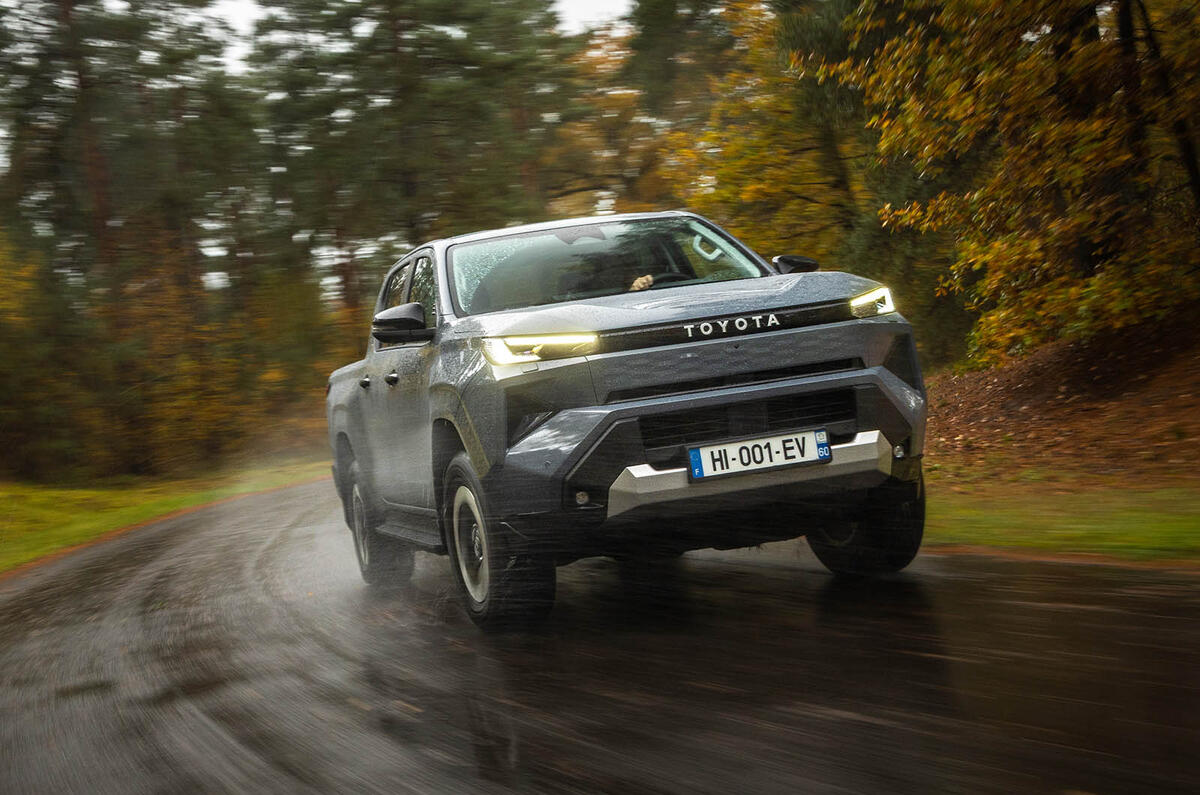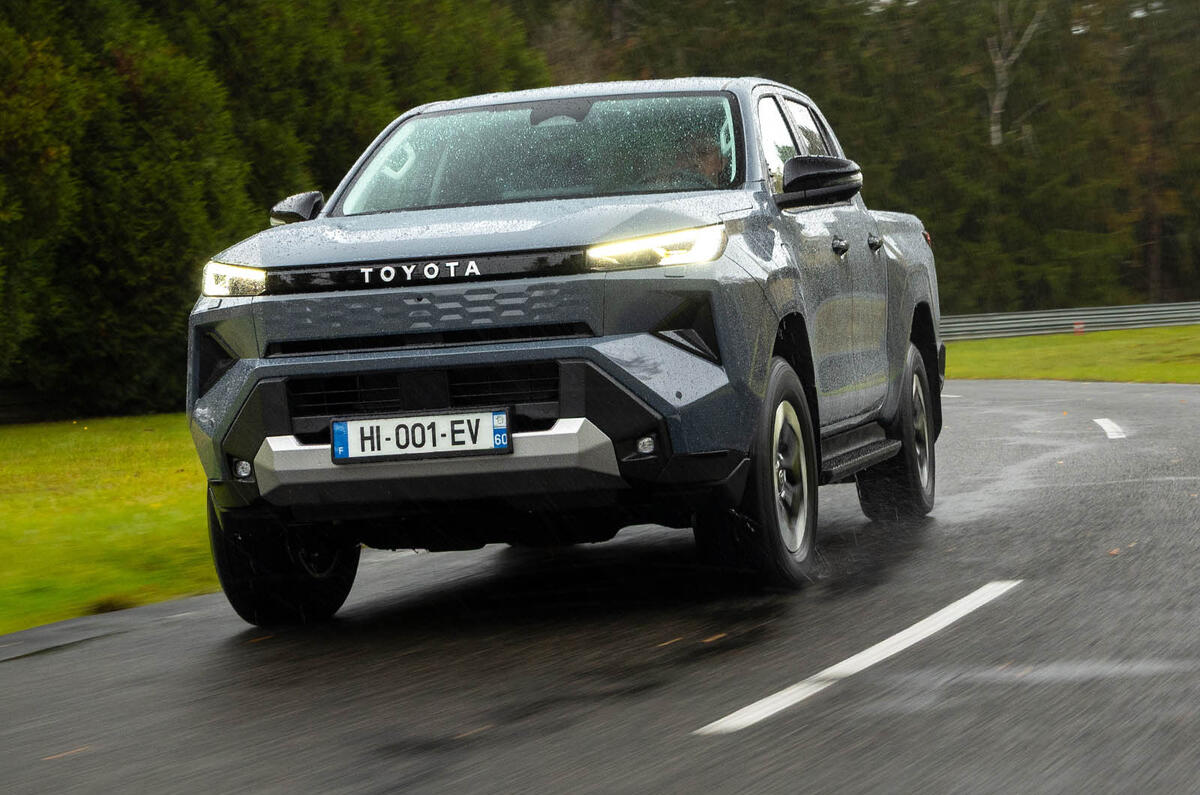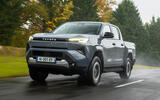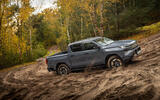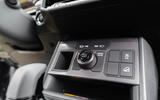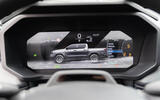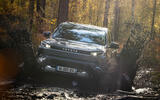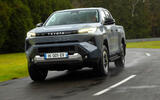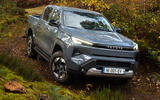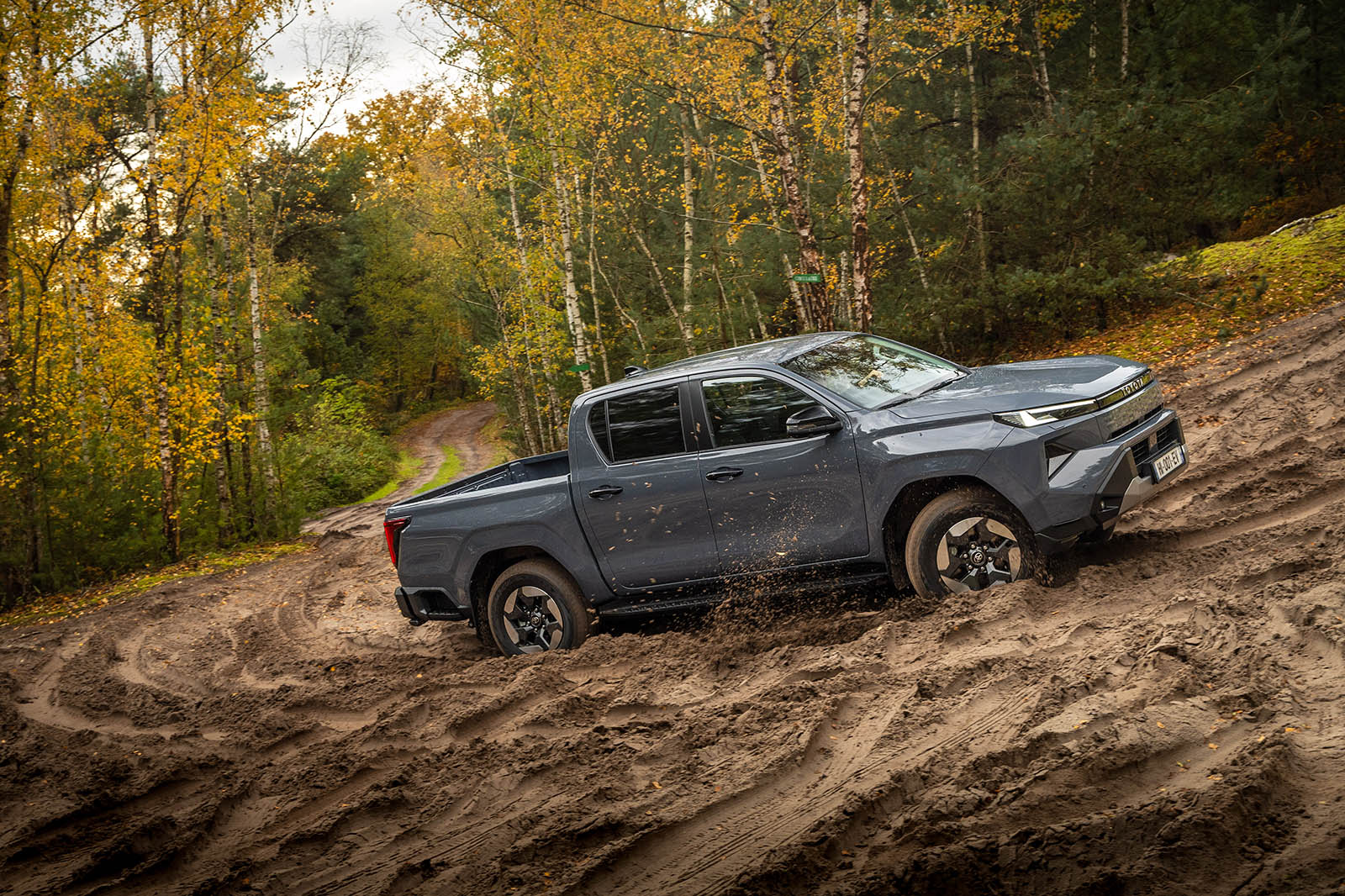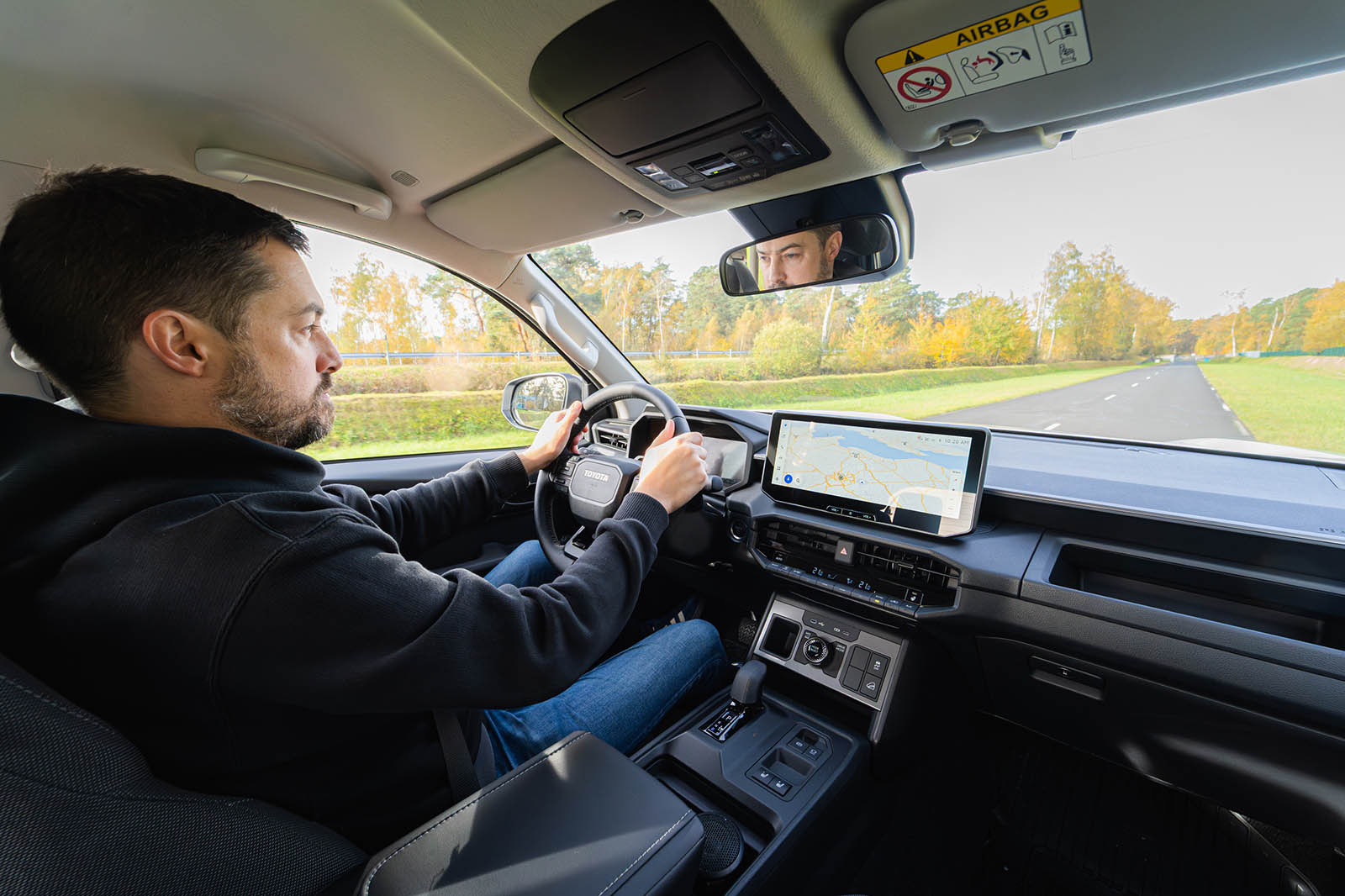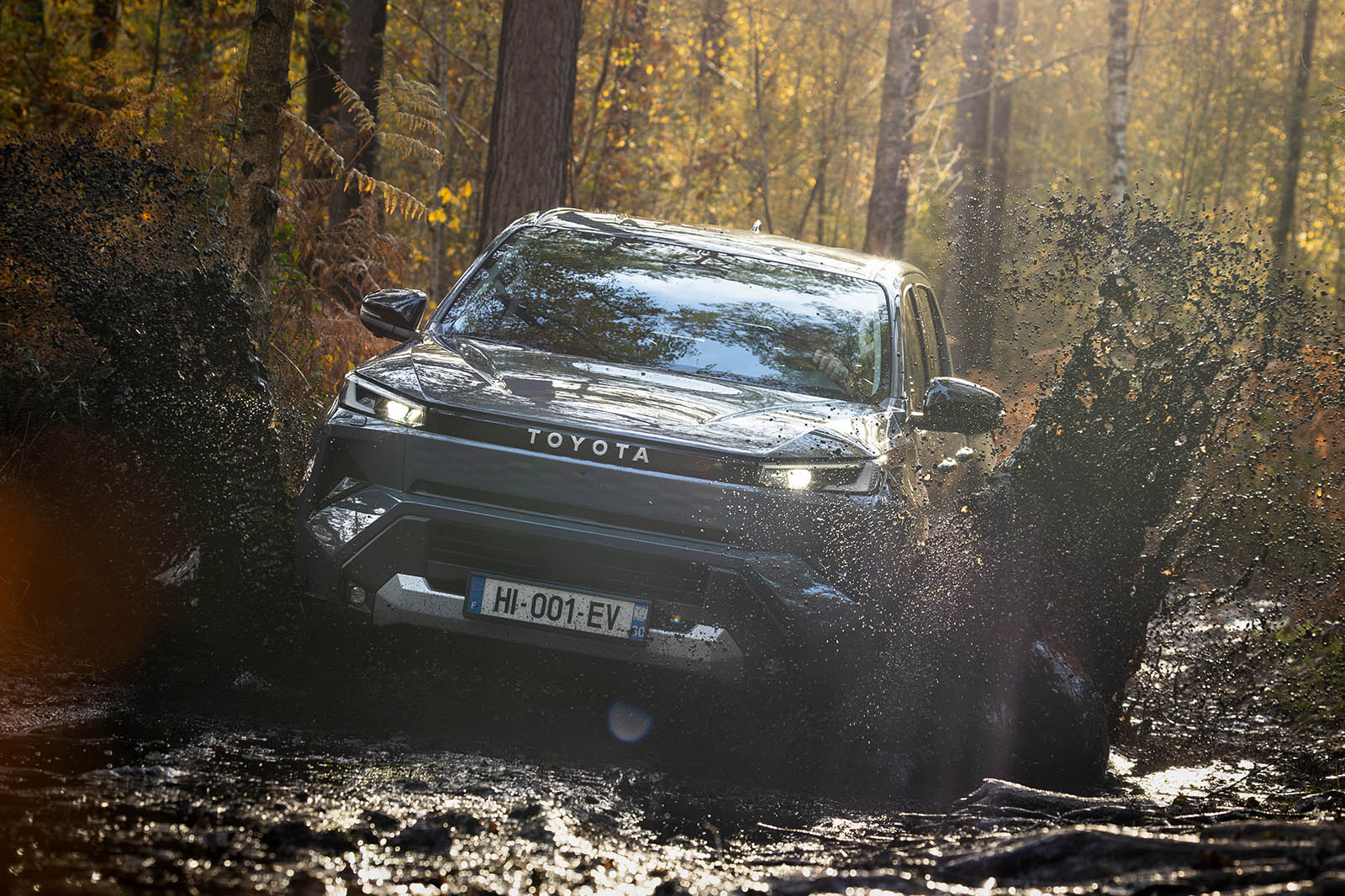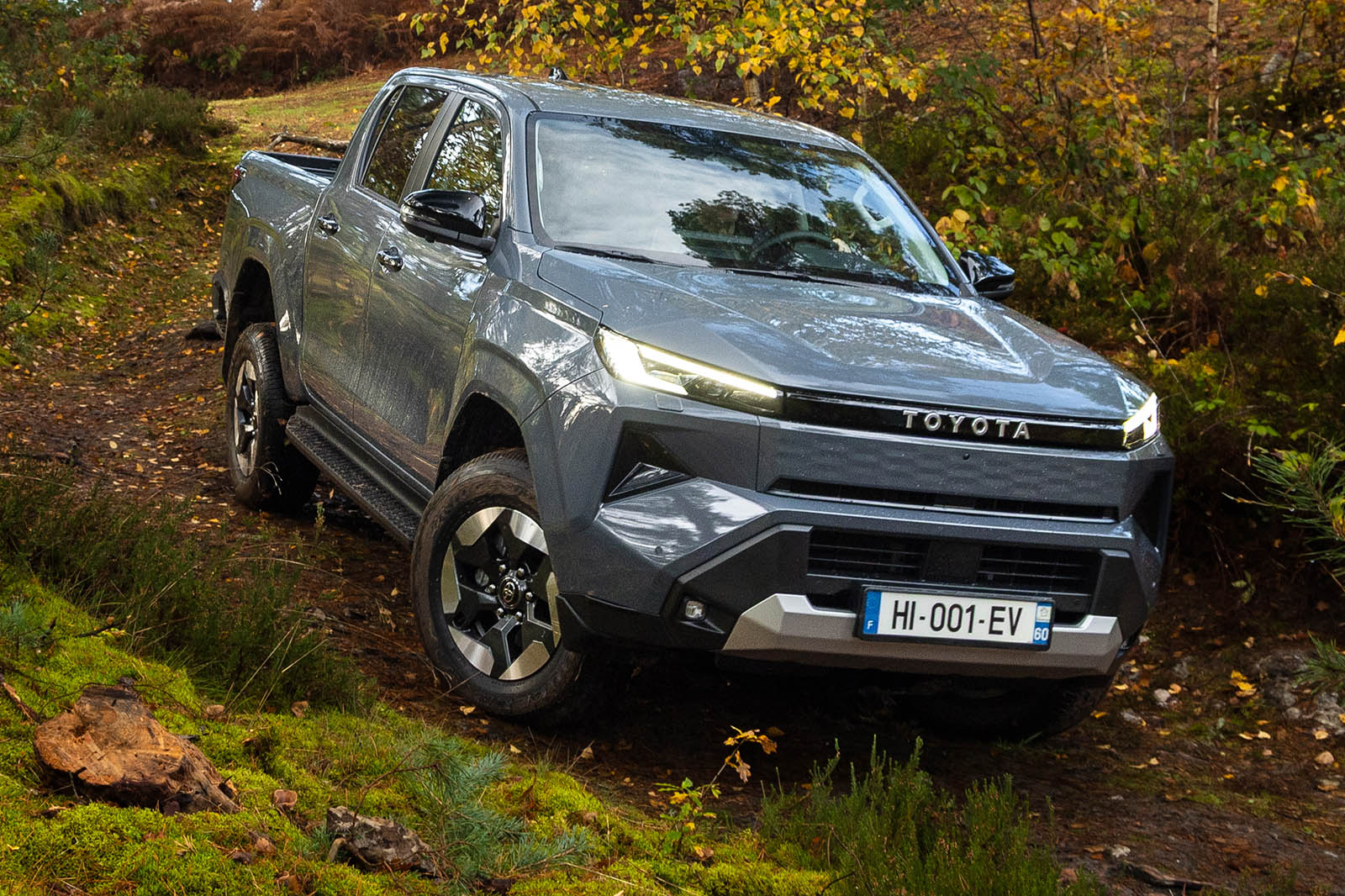We’ll go more into those compromises shortly, but there’s one thing that Toyota has no intention of compromising, and that’s its reputation. Or more specifically the Hilux’s reputation as the toughest truck on the planet. Adding batteries is no excuse for weakness and reliability and robustness were therefore at the top of the list when it came to redesigning this ninth generation of the Hilux for an electric future.
Visually it’s a big departure from the current generation Toyota Hilux, both inside and out. The front grille gets the aerodynamic treatment you’d expect for an EV with a minimum of air intake openings to help it glide through the air more smoothly. It’s also far more upright and aggressive, reinforcing its toughness, despite its powertrain.
Despite it being all-new, Toyota has not changed the important elements that make a Hilux as capable as it is. It’s still a body-on-frame design with large rear leaf springs. The size hasn’t changed either, with a negligible 5mm decrease to its 5.3m overall length.
The big difference is that this will be the Hilux of the future, with a design that will not only be used for the BEV model, but also the 48V mild hybrid, which will become the default combustion engine option for mainland Europe and the UK. After extensive trials with a handful of fleet customers, Toyota will also introduce a hydrogen fuel cell model on this platform by 2028.
For now, though, the battery-electric truck will be the zero-emission standard bearer, using a permanent all-wheel drive system with a 193bhp power output. Power comes from a 59.2kWh lithium ion battery pack made up of five 16-cell modules that have been carefully positioned within the protective confines of the chassis and reinforced with added impact-absorbing sections to create something akin to a full body-length sump guard.
Toyota concedes that the battery is on the small side, but making it bigger would compromise the vehicle’s toughness as the pack then wouldn’t fit between the chassis rails. The first compromise, then, is that the Hilux EV is only good for 150 miles of range. Then again, its closest rival, the Isuzu D-Max EV, only gets 13 miles more out of its 66.9kWh battery.
Fast charging at up to 150kW goes some way to quash range anxiety but ardent Hilux fans will point to the limited 1.6-tonne towing limit and 715kg payload as the major reasons for sticking with diesel power.



